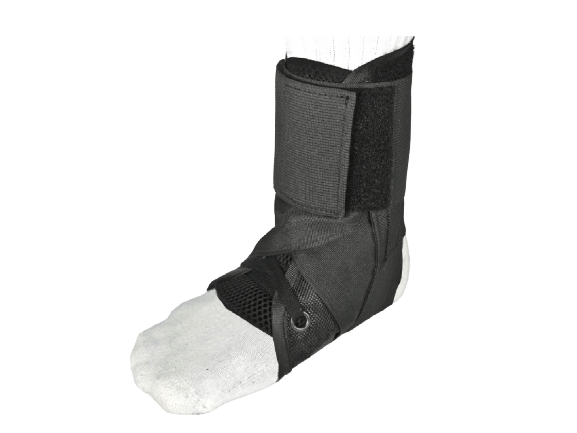
Common Types of Ankle & Foot Injuries
Common Types of
Ankle & Foot Injuries
Ankle injuries show up in three types - bone, ligament, and tendon. All three are kinds of tissues, and each connects to the lower leg. Three bones meet at the ankle, including the tibia, fibula, and the lower leg talus. The bones are held together by bones, ligaments, and tendons, all with separate purposes.
The type of damage depends on which part has been injured. Most commonly, people experience ankle sprains or strains, stress fractures, fractures, Achilles tendonitis or tears, and plantar fasciitis. Each of these injuries can make walking difficult or impossible. It is essential to consult a healthcare professional for a proper diagnosis and treatment plan when experiencing an Ankle or Foot injury in order to ensure a quick return to your normal daily activities.

Ankle Sprains & Strains* happen because of ligament issues. Ligaments are connective tissues that keep the joint from moving too far to either side. A sprain occurs when the ligament does stretch too far or if it tears. Over time-stretched ligaments can lead to ankle weakness, repeated sprains, and arthritis.
Torn Ligament: A torn ligament is a specific type of injury where the ligament itself, which connects bones together and stabilizes joints, is either partially or completely torn. This is more severe than a sprain and often results from significant trauma or force applied to the ankle or foot.
Stress/Minor Fractures are caused by repetitive or excessive force and leave damage on the bones of the foot. Often, these are caused by traumatic injury or repetitive actions. Without time to heal, these fractures can lead to tiny cracks and weaken the bone.
Non-Displaced Fractures are ones with which the bone cracks or breaks but retains its proper alignment and can happen from trauma or impact. These fractures are larger than stress fractures. Here the ankle can swell, bruise, become deformed, blister, stiffness, and more. Some people mistake fractures as sprains, which is an important reason you should visit your doctor for an accurate diagnosis.
Tendonitis refers to acute tears of the tendon called the peroneal. Along with pain, you can expect swelling and warmth to the touch. Acute tears will also cause instability of both the foot and ankle.
Plantar fasciitis is one of the most common problems for feet and ankles, affecting nearly two million people per year. The fascia band of tissue in the arch of the foot can become inflamed and cause sharp shooting pain in the heel. Even taking a few steps can cause problems when the band stretches.
*What is the difference between
Sprain and Strain?
A sprain involves an injury to the bands of tissue that connect two bones together, whereas a strain involves an injury to a muscle or the band of tissue that attaches a muscle to a bone.
Sprains overstretch or tear ligaments, while a strain involves overstretching or tearing muscles or tendons. As tendons are thick fibrous cords of tissue that connect to muscles; these are very common in many joint injuries.
The symptoms can be very similar for sprains and strains, as you may experience bruising, pain, swelling, limited flexibility, and range of motion with either. The main difference, though, in reference to symptoms, is a sprain may have bruising while a strain will not, but it can have spasms of the muscle.
Telling the two apart requires medical expertise and treatment as there are three grades of these injuries and each with different levels of care. Additionally, the pain and or swelling associated with sprains and strains can be indicators of a more severe tear, stress fracture or a broken bone which will become evident through our CPCUC examination.

Orthopedic Products
Immediate Relief and
Treatment for Your Injuries




















